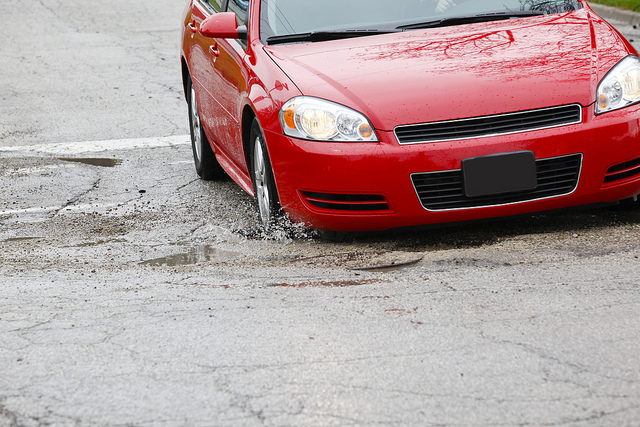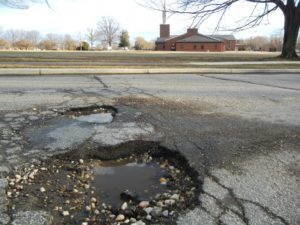Potholes are a huge problem all over North America, but nowhere are the detrimental effects more evident than in Canada’s capital, Ottawa. According to CTV News, the city experienced over 40 freeze-thaw cycles during the 2018-2019 winter, which created tens of thousands of potholes that need to be fixed.
Explore 12 Futuristic Technology Trends Solving Concrete's Biggest Challenges.
How Potholes Form: Explaining the Freeze-Thaw Cycle
During the freeze-thaw cycle, the water in concrete can expand by about 9%. As this happens pressure increases, and if pressure exceeds the tensile strength of concrete damage will occur. The thawing process that follows causes the pavement to contract and crack, furthering the damage. This repetitive cycle, combined with high volumes of traffic, can cause cracking, crumbling, and major potholes on road surfaces.
Click here to find out how recycled tires can help repair potholes!
Potholes: A Huge Expense for Municipal Governments
Potholes may not seem like a major threat to infrastructure, but they can run cities hundreds of thousands of dollars in repair costs every year. And as statistics show, these costs are increasing. According to Ottawa’s draft budget for 2020, Ottawa set aside $9.8 million dollars for pothole repairs, an increase of 7% from last year!
Even with this enormous amount of funding, there are still potholes that do not get repaired. It also doesn’t take into account claims made against the city for pothole-related damage to vehicles.
What Kind of Damage Can Potholes Do to Your Vehicle?
Repeated freeze-thaw cycles result in weakened pavement and, ultimately, potholes.
Ottawa drivers face increasingly deteriorated conditions of city streets each and every spring. In addition to being annoying and inconvenient, potholes formed by recurring freeze-thaw cycles can also cause serious damage to vehicles, including:
- Flat tires
- Dented or cracked wheels
- Damaged steering, suspension, and/or wheel alignment
According to provincial government standards, the City of Ottawa is required to fix a pothole anywhere between 4 and 30 days after becoming aware of the problem. The amount of time it takes the city to repair the problem also depends on the size of the pothole and whether it is on a paved or an unpaved road.
There Must Be a Solution…Durability Testing with Electrical Resistivity
You’d think that a problem as predictable, costly, and destructive as potholes would have a solution. And although researchers all over the world are working hard to develop more durable, pothole-proof materials, we should not forget about improving concrete testing technologies and pavement preservation techniques to ensure long-lasting quality of our concrete roads. In addition, as cities grow so does the need for regular and reliable testing on busy highways and streets.
Surf™ is a laboratory test device for rapid, easy and accurate measurement of the surface electrical resistivity of concrete based on the four-probe (Wenner-Array) technique. Surf tests according to AASHTO T358: Surface Resistivity Indication of Concrete’s Ability to Resist Chloride Ion Penetration, which allows you to evaluate the quality and permeability of concrete in seconds.
Giatec’s Surf device is the fastest and most accurate technology for the measurement of surface resistivity.
Surf can be used to evaluate;
- Performance-based quality control of concrete
- Estimation of chloride diffusion coefficient of concrete
- Service life design of concrete structures
- Estimation of the remaining life of concrete structures
- Crack detection in concrete elements under load
- Monitor the setting time of fresh concrete
The unique setup of this device enables the measurement of electrical resistivity with high accuracy while reducing the duration of the test, minimizing the ambient effects, and reducing human error. This technology has the potential to save significant costs associated with testing and labor for DOTs, testing agencies, and contractors.
Click here for more information about Surf.
Sources
**Editor’s Note: This post was originally published on May 29th, 2018 and has been updated for accuracy and comprehensiveness.











